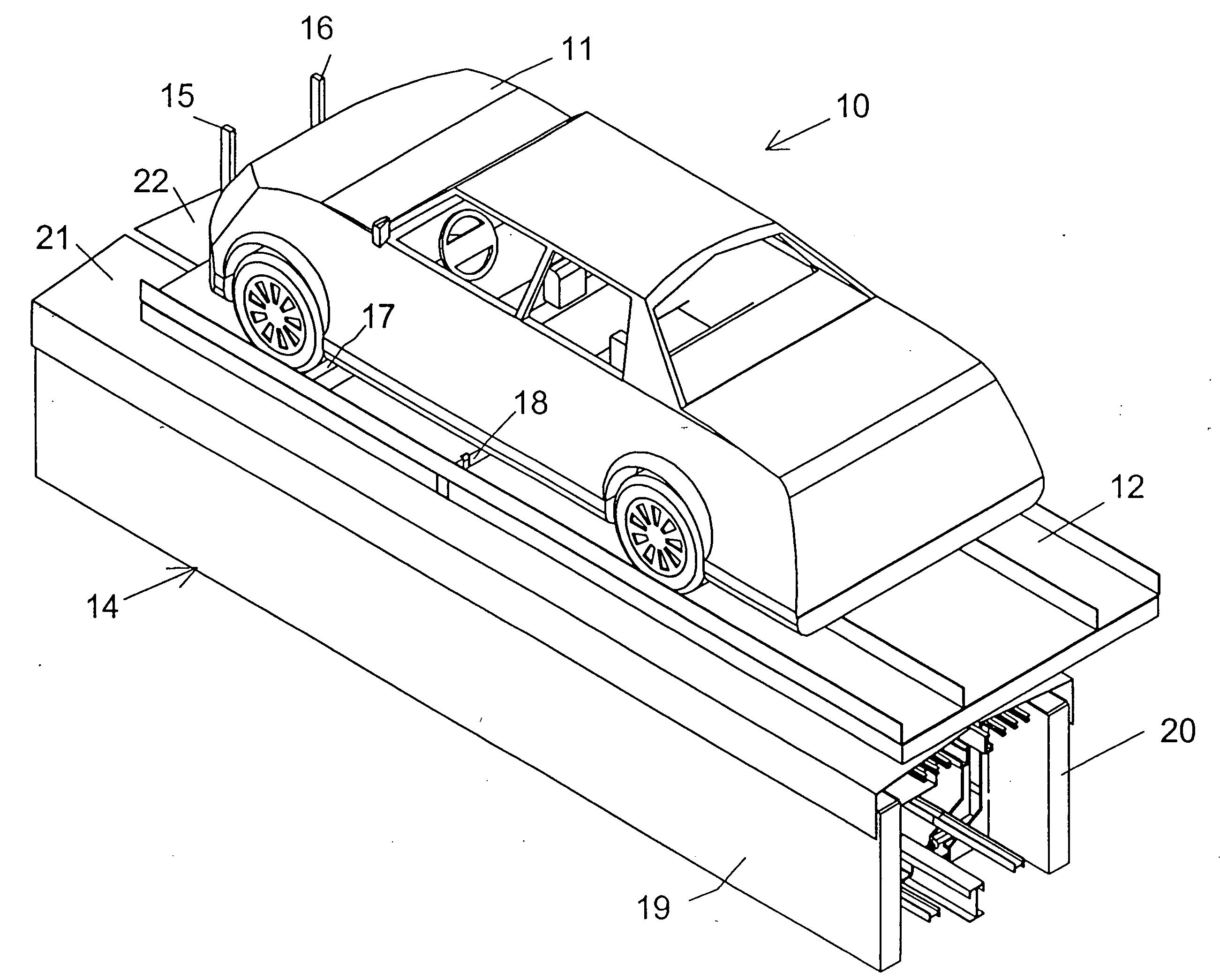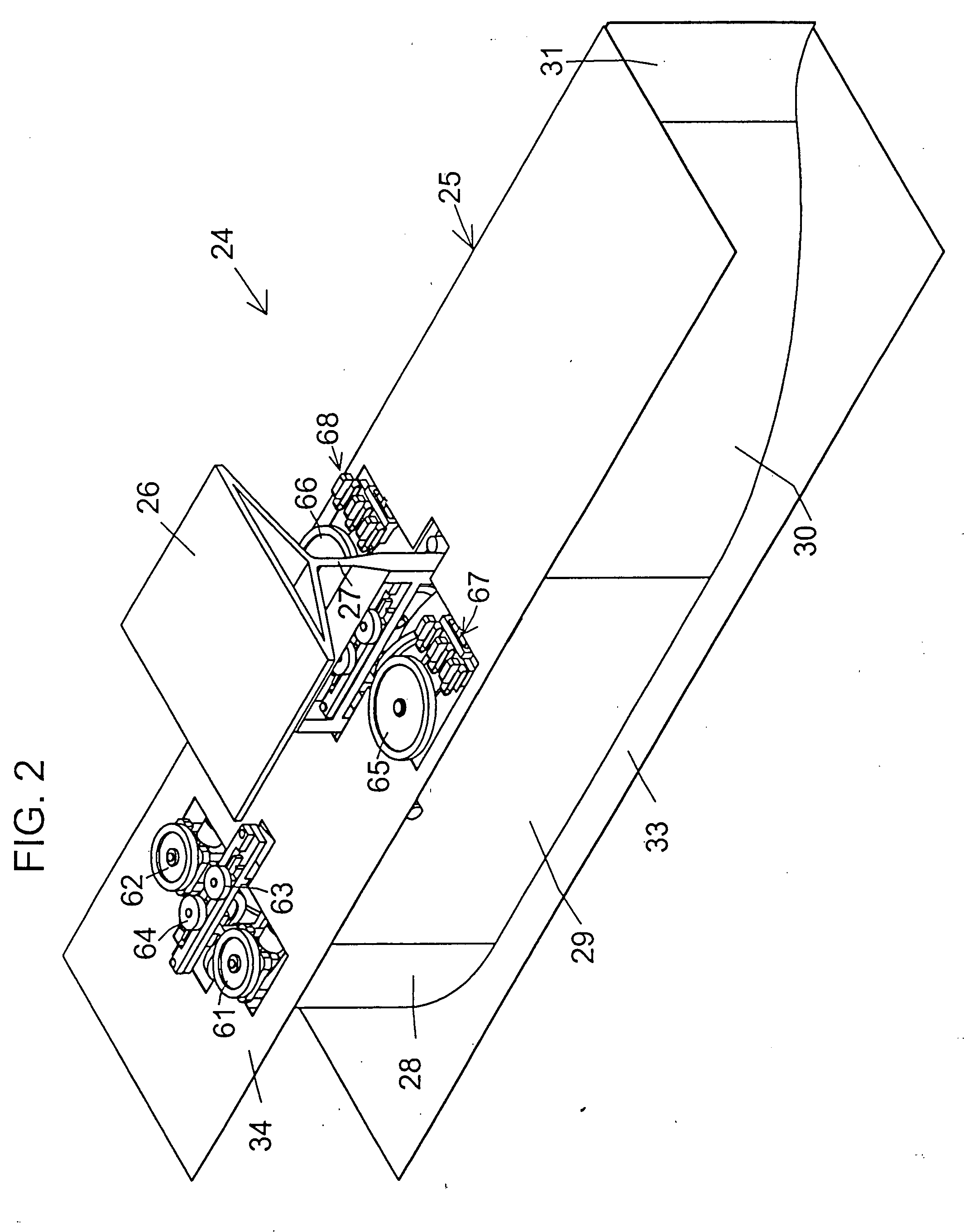Automated transport system
a technology of automatic transportation and transport system, applied in the direction of transportation items, electric/hybrid propulsion, electric devices, etc., can solve the problems of not necessarily good ideas and hard to escape, and achieve the effects of low cost, high efficiency, and high efficiency
- Summary
- Abstract
- Description
- Claims
- Application Information
AI Technical Summary
Benefits of technology
Problems solved by technology
Method used
Image
Examples
Embodiment Construction
[0070]Reference numeral 10 generally designates one form of transportation system constructed in accordance with the invention, portions of which are shown in FIG. 1. The system 10 is particularly designed for expansion and to eventually form a wide-scale network for automated carrying of various types of loads by carriers moving in guideways. The carrying of a car 11 is shown. The system 10 can also be used to carry passengers, freight and other loads.
[0071]The car 11 is shown being carried on a pallet or platform 12 above a short section of a guideway 14. Guideway 14 may be of any desired length and may extend forwardly to a divergent Y-junction at which carriers may be steered to either of two guideways. The guideway 14 may also extend rearwardly to the end of a convergent Y-junction that receives carriers entering from either of two guideways.
[0072]The platform 12 is similar to, but different from, that disclosed in my U.S. Pat. No. 6,237,500 issued May 29, 2001. Platform 12 inc...
PUM
 Login to View More
Login to View More Abstract
Description
Claims
Application Information
 Login to View More
Login to View More - R&D
- Intellectual Property
- Life Sciences
- Materials
- Tech Scout
- Unparalleled Data Quality
- Higher Quality Content
- 60% Fewer Hallucinations
Browse by: Latest US Patents, China's latest patents, Technical Efficacy Thesaurus, Application Domain, Technology Topic, Popular Technical Reports.
© 2025 PatSnap. All rights reserved.Legal|Privacy policy|Modern Slavery Act Transparency Statement|Sitemap|About US| Contact US: help@patsnap.com



